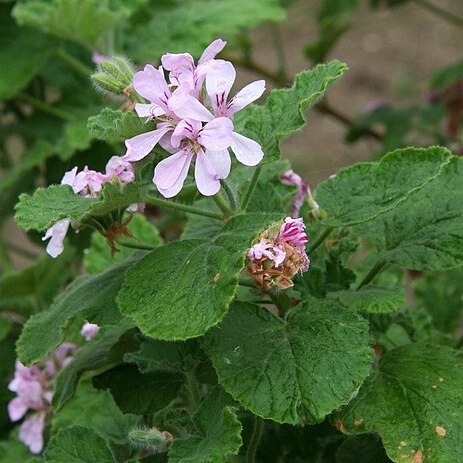Erect, branched, strongly balm-scented, ± viscid shrub, 1.00-1.75 m high; herbaceous, becoming woody; villous, glandular hairs interspersed. Leaves soft, simple, lamina panduriform to cordiform, up to 60 x 75 mm, pinnatilobate to pinnatipartite, segments shallowly lobed, apex obtuse, margins crenate; adaxially villous; abaxially villous to lanate, discolorous; petioles up to 30 mm long. Inflorescences on flowering branches, of 2-20-flowered pseudo-umbels; peduncles up to 80 mm long. Petals 5, pale pink to pink; posterior petals spathulate, 20-35 x 6-13 mm, apex obtuse to emarginate, markings dark purple; anterior petals spathulate long-clawed, 15-28 x 5-10 mm. Flowering time Aug.-Jan.
Aromatic shrub to 1.2 m. Leaves cordate and deeply lobed, velvety hairy, balm-scented, ± 6 x 5 cm. Flowers to 20 on short but stout, axillary peduncles, ± 40 mm diam., pink, subsessile; hypanthium 6-13 mm long.

